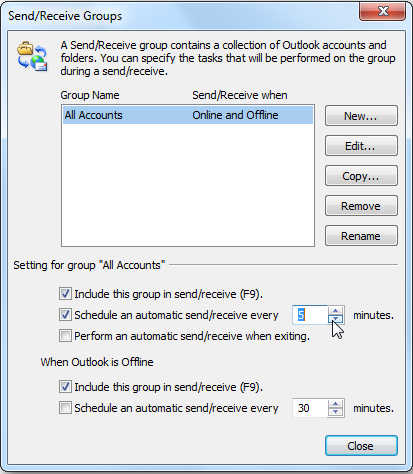

To fix this, use only one alias/email account and delete those duplicate emails.ĭuplicate email #8 – on an IMAP account, if you have set-up Outlook to retrieve new emails automatically upon startup and open the Inbox automatically you will see each message is duplicated. Yes, manually deleting those duplicates is the only thing you can do.ĭuplicate email #7 – if you have more than one alias defined for the same email account in your Outlook profile, you will receive the same email on each alias (you will see as many duplicates as you have aliases).
#Outlook duplicate emails in inbox download
This is especially true for large data files, that hold years of work and the only way to go about it is to search and delete each duplicate manually (yes… a daunting task, but one that needs doing) ĭuplicate email #6 – if the email server or Outlook fails to respond during a Send/Receive, then the next sync will download the previous emails again. Of course, if the same emails are present in both data files you will see duplicates. You have to make the appropriate changes to your rules set-up and sift through all your folders to delete those duplicate emails.ĭuplicate email #5 – if you import emails from different Outlook data files (PSTs or OSTs) in your current Outlook profile, then the emails that are both in your current file and in the one you import will be displayed. Now, if, you receive a message from contact X, that also contains WORD in the subject line then you will have the same email in folder Y and in Z. Rule 2: move messages that contain WORD in the subject line to folder Z Rule 1: move messages from contact X to folder Y The fix is to uncheck that option (you can find it under Account Settings -> More Settings -> Advanced).ĭuplicate email #4 – you can define rules in Outlook that generate duplicates, for example: You can’t actually fix this, only manually delete those duplicates and hope that it won’t happen again.ĭuplicate email #3 – the “Leave a copy of the messages on the server” box has been checked on your account settings and Outlook creates duplicate emails at each Send/Receive. In order to fix this, you or your IT administrator will have to log in to the email server and delete the corrupt/damaged email that is creating all the duplicates ĭuplicate email #2 – after you have synchronized your Outlook profile with your phone/tablet, something went wrong – the result is the last batch of emails are present twice on your PC. In order to help you out, we have collected a couple of reasons why this email behavior happens as well as their respective fixes.ĭuplicate email #1 – a message on the server is corrupt, and thus generates duplicates when Outlook starts its Send/Receive process. This scenario, unfortunately, isn’t that rare and it can pose a real nuisance since you have to search and diagnose the source of the duplicates, then find a fix for it and lastly, clean up your Inbox… well, you can leave them alone and just get on with work, but those emails will take up space and if the problem persists then in the long run they will slow down Outlook, your email server and lead to more complex issues. Only this time, when you look in your Inbox, you find it filled with duplicates upon duplicates of emails, all having the same subject, timestamp and so on…

When you’re done tending to the flagged email, click on the flag again and it’ll turn into a check to mark the message as completed.īesides flagging an email for yourself as a reminder, you can also set a flag for your recipient if you need a swift reply or want to mark your message as important.One morning, you sit down in front of your PC, take a sip of coffee and, as usual, launch Outlook for another fun-filled day of answering emails. You can right-click on a flag to change the date if you want to set the reminder for tomorrow or next week. Each message should have a greyed-out flag that will turn red when clicked on.

The easiest way to flag an email is in your inbox itself. Not only will the email get flagged in your inbox, setting you a visual reminder, but it will show up in other places as well.įlagged emails also appear in your Outlook To-Do Bar, your Tasks, and in the Daily Task List in the calendar. That’s where flags come in.įlagging an email sets it as a reminder for something that needs immediate attention or a message that you might need to follow up on. Folders, categories, and automated rules are all great tools to help you manage and organize your inbox, but sometimes you just need an extra reminder for a really important email.


 0 kommentar(er)
0 kommentar(er)
